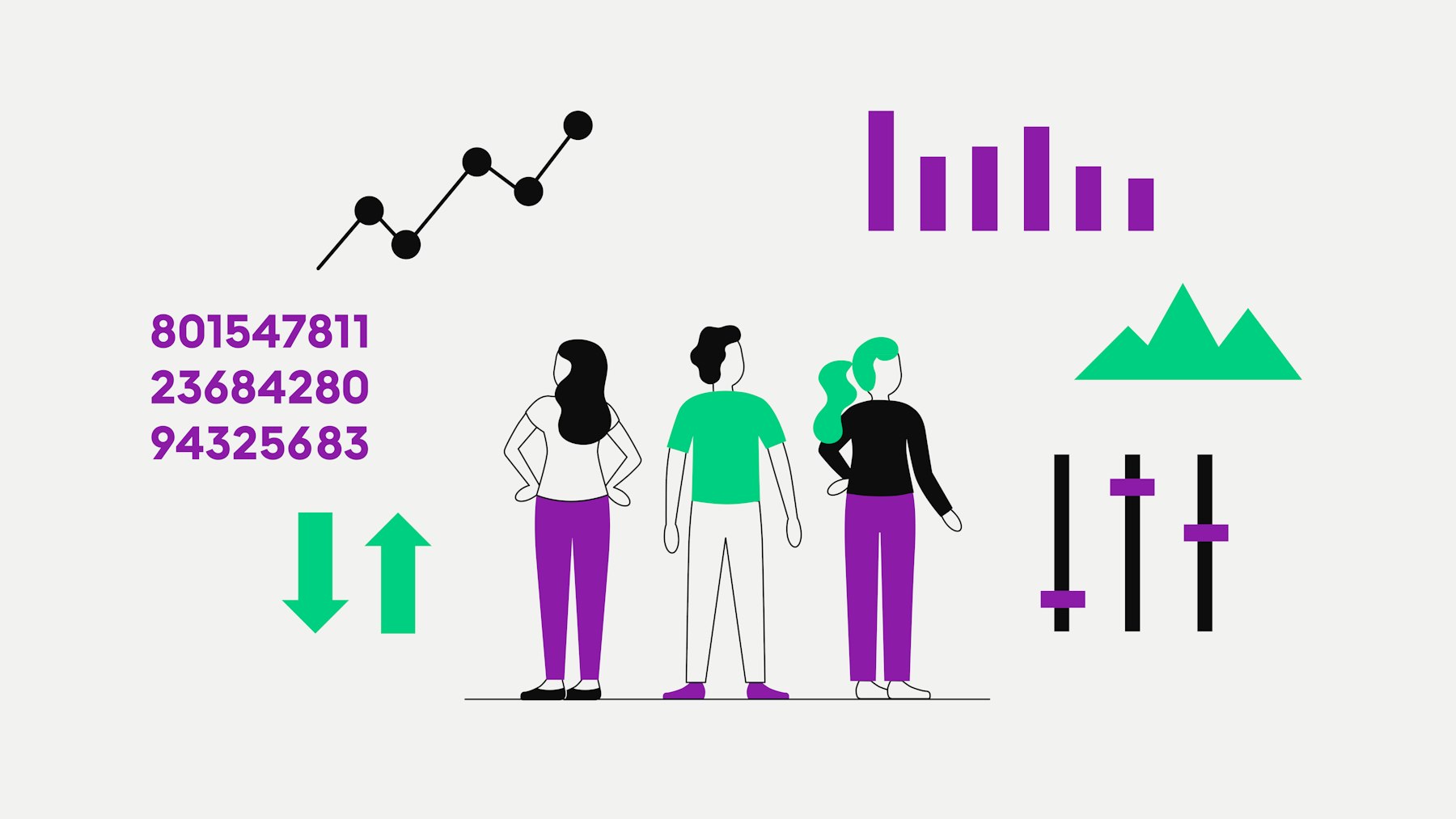Exponential moving average (EMA)
While with simple moving averages (SMA) the oldest price is dropped when a new price is added, all existing closing price data always flows into the calculation of the exponential moving average (EMA) while the period of time for calculation is only utilised to determine the weighting factor, with more recent prices also awarded more weight than prices further back in time. The SMA is the trader’s favourite in visual analysis, so to speak, while the EMA is more commonly used in automated trading systems.
Moving average convergence divergence (MACD)
Advanced crypto traders may use moving averages to generate trading signals through moving average crossovers or use the moving average convergence divergence (MACD) by subtracting the 26-period EMA from the 12-period EMA to derive a set of values that is called the "fast line". A new 9-day average line called the “slow line” is created from this line.
Both of these lines are now plotted on a chart. Buy signals are indicated when the fast line crosses the slow line from bottom to top and sell signals when the fast line crosses the slow line from top to bottom.
Support and Resistance Level
Support (levels) and resistance (levels) in a trading chart indicate prices, which appear to support or to resist the range of movement of a market. Visually, the price trend is depicted by two lines forming a type of tunnel: a support level indicates the position at which the price consistently stops to fall and begins to rise again, while the level at which the price usually ceases to rise and begins to drop again is referred to as the resistance level.
An important property of moving averages in general is that they also indicate potential support and resistance by plotting a MA on a chart from the highest to the lowest point of the price trend to identify the direction of a trend. If a line is on an upwards move, the moving average line can be viewed as a support level and if it is on a move downwards, as a resistance level.
Oscillators
Another important analysis tool is an oscillator that traders use to compare the range between highs and lows over a period of time.
Stochastic oscillator
To create a stochastic oscillator tracking momentum, two lines are drawn on the chart to create a type of channel or tunnel in which the price is mapped: one is the indicator and the other will be our signal line, or "trigger line". As soon as the signal line is crossed by another indicator or line, this is assumed to indicate that potentially important price action is about to take place.
Relative Strength Index (RSI)
The relative strength index (RSI) is an oscillating indicator - meaning that it moves back and forth between points - shown as a line across a chart that helps crypto traders to determine the momentum - the notion that a trend of price increase or decrease of an asset will continue - by assessing whether this asset is in an oversold or overbought zone.
Overbought and oversold mean, respectively, that an asset has experienced a long or strong price increase or decline and increasingly fewer traders are willing to buy or sell at that level because they expect a market correction in the short term. An RSI indicates values between zero and 100, with an asset at a level of 70 deemed overbought and thus prone to a correction, while an asset at a level of 30 is oversold and possibly about to rally.
Commodity Channel Index (CCI)
As its name suggests, a commodity channel index (CCI) is an indicator that was originally created for trading commodities but it is also frequently used in other asset classes to identify overbought and oversold markets. The CCI is displayed separately beneath a chart. How does a Commodity Channel Index work?
A CCI consists of a line and an upper band at 100 and lower band at -100. The zone between the lines is the “normal” range, with indicator values above 100 traditionally considered to represent signals to buy and for long positions and beneath -100 to go short. If the indicator line crosses the 100-mark again downwards, the buy signal is cancelled. However, some traders use the 200 and -200 levels to detect respective extreme points.
What are Bollinger bands?
A key weakness of moving averages, however, is that they can only be used as reference during times a market is trending. Many moving averages map market behaviour with a delay, hence a short trend may already be over when the MA is just indicating it, and EMAs need a relatively long time span to “settle in” until they display coherent indicator values.
For this reason, crypto traders also rely on another tool for analysis: Bollinger bands are a chart analysis indicator developed by John Bollinger to indicate changes in trends. Bollinger bands come in pairs and look like curvy lines that sit two standard deviations above and below the moving average on a trading chart. In this context, standard deviation is the measure of an asset’s movement away from its average price.
